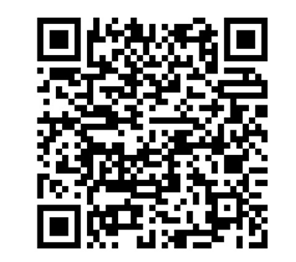On July 27,2020,the State Administration for Market Regulation (SAMR) issued the Measures for the Supervision and Administration of Food Labeling (Draft for Comment) (hereinafter referred to as the Draft),which based on the opinions and suggestions collected in the first comment in 2019,SAMR has made amendments and is now solicit opinions again. The deadline for comments is August 26,2020. Antion has compared the Draft with the current Food Labeling Management Regulations and other relevant food labeling regulations,and analyze and interpret its main changes and impacts.
1. Detailed requirements for date of production and expiry date
The Draft stipulates that "the date of production and expiry date should be marked prominently,and can be printed on the packaging surface with a white background;if laser etching is used to mark the date of production and expiry date,the text should be clear. The height of the date of production and expiry date shall not be less than 3 mm".
The Draft added specific requirements for the labeling of date of production and expiry date,and unified the labeling form of date of production and expiry date.
l “Both food date of production and expiry date should be marked in the order of year,month and day;
l The year number can use 4 or last 2 digits;
l No separator among year,month and day;
l If the month and day are less than 2 digits,0 should be added before the number;
l If the expiry date of food does not exceed 72 hours,the date of production and expiry date of the food shall be marked in hours,and the 24-hour system shall be used."
2. Clarify that imported foods must not re-affix Chinese labels on foreign labels
The Draft stipulates that "imported food should be marked with Chinese labels,and the Chinese labels should be directly pasted,printed,or marked on the smallest food sales packaging,and the foreign labels must not be affixed again with Chinese labels."
Although it is conducive to ensure the food safety of imported foods,it will make a great impact on imported foods,especially products with a small import volume or parallel imported products will be difficult to meet the requirements.
3. Clarify that food cannot be claimed against specific groups
The Draft stipulates that,“in the absence of laws,regulations,food safety standards and other provisions,words or patterns shall not be used on food labels to express,imply or emphasize that the product is suitable for infants,children,the elderly,pregnant women and other specific groups.” Children’s food,food for pregnant women and other foods will be further regulated. Food-related companies should clarify product positioning,and legally and compliantly produce,operate,and label in accordance with corresponding product standards. Companies should pay attention to not only not marking the words of such groups on food labels,but also not using patterns,including cartoon patterns to imply the applicable groups to avoid unnecessary risks.
4. Clarify the distinctive label content and words of genetically modified food,irradiated food,iodized edible salt,reconstituted milk and other products
The Draft clearly requires that the above products must be distinctively marked with the words “GMO”,“irradiated processing”,“iodine”,“no iodine”,“reconstituted milk” and others on the food label.
5. The special requirements for special food labeling are further clarified
The labels and instructions of special foods (including health foods,formula foods for special medical purposes,and formula foods for infants and young children) shall comply with relevant laws,regulations,national food safety standards,and regulations on product registration and filing management. In addition,the Draft also made specific requirements for its specific label content,warnings,nutrient content claims,function claims,etc.
6. Encourage food manufacturers to mark low-oil,low-salt,low-sugar or no-sugar prompts on food labels.
7. Further refine the contents that cannot be marked in food labels. Based on the original relevant requirements,it further clarifies that the following contents shall not be marked in food labels:
l For substances that are not contained or not used in foods,"no addition","zero addition","not contain" or similar words are used to emphasize those that are not contained or not used;
l For non-use of genetically modified food ingredients,the food is introduced with “GMO-free”,“Non-GMO” or similar words;
l The food is introduced with "special supply","special production","special needs","supervised production" and other words;
Please click Interpretation to Measures for the Supervision and Administration of Food Labeling (Draft for Comment) to get more changes of the Draft.
Upcoming Online Course
Antion Online|Interpretation to Measures for the Supervision and Administration of Food Labeling (Draft for Comment)
At 15:00 on August 7,Antion will hold an online live course to analyze and interpret the Measures for the Supervision and Administration of Food Labeling (Draft for Comment),share food labeling cases,and bring new ideas to the compliance management of food enterprises.
Registration Process
1. Scan the QR code below to contact with online service person,and note your company-position-name
2. Share the poster in the Friends Zone no less than 2 hours,send the Friends Zone Screenshot to the online service person
3. If you want to obtain the live broadcast courseware,you need to forward the poster below to the food-related WeChat group with more than 200 people,and send the Screenshot to the online service person

If you have any questions,please feel free to contact us!
